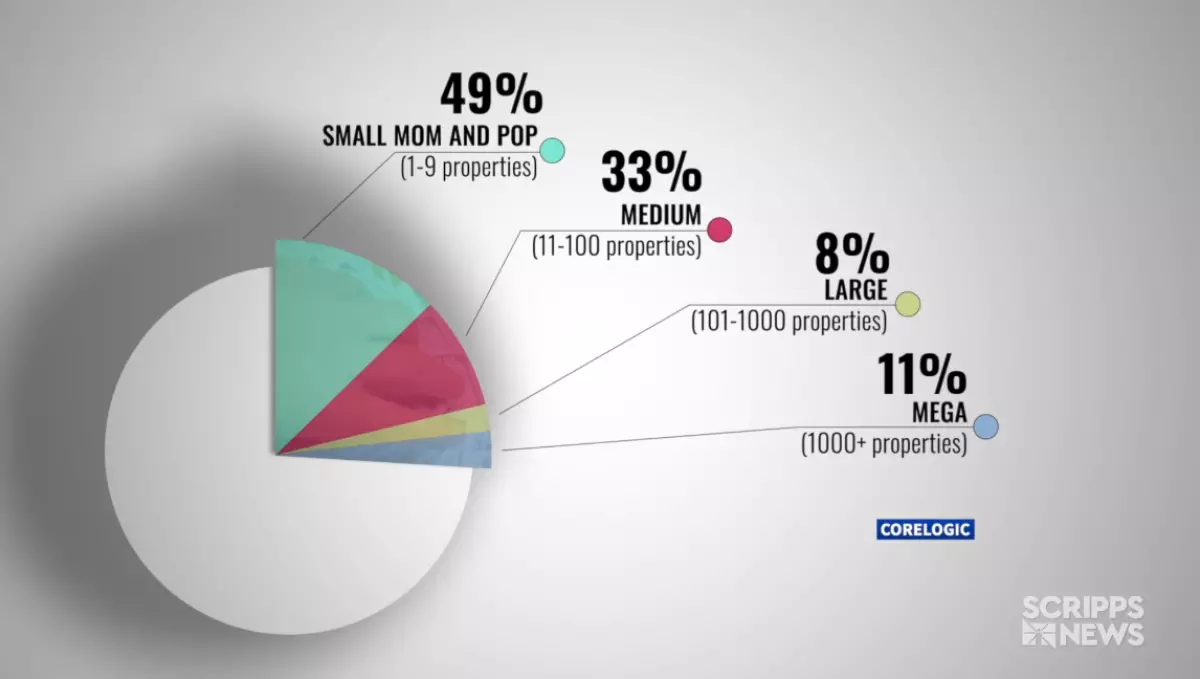New data from leading analytics companies reveals a significant surge in real estate investors' activity in the housing market in recent years. While this trend is not entirely new, the statistics are striking. According to the non-partisan research organization Pew Charitable Trusts, investors purchased a staggering 24% of single-family homes in 2021, marking the highest year-over-year increase in 16 years. The figure peaked at 28% in 2022. This exponential growth raises concerns about the impact on the housing market and the ability for regular buyers to achieve the "American Dream."
The Rise of Corporate Investors
The rise of corporate investors can be traced back to the 2008 housing crisis, which resulted in a wave of foreclosures across the United States. These investors view real estate as a lucrative and secure investment opportunity, especially in a time when trillions of dollars are seeking profitable ventures. Mike DelPrete, a global real estate tech strategist and scholar at the University of Colorado Boulder, emphasizes the importance of paying attention to this issue.
The Impact on Regular Buyers
One of the main concerns is the competition regular buyers face when bidding against institutional investors. Cash buyers with no mortgage or contingencies have a clear advantage. DelPrete highlights that individuals looking to purchase homes in markets like Atlanta or Phoenix often find themselves up against institutional buyers, making it increasingly difficult for them to secure a property. The institutional investors' primary objective is to buy houses, and they possess the financial resources to ensure their success.
The Split of the Investor Pie
CoreLogic, a prominent data firm, provides insights into how these investors divide their investments. In the third quarter of 2022, small mom and pop investors (those owning fewer than 10 properties) accounted for 49% of homes purchased by investors, followed by medium-sized investors (11-100 properties) at 33%. Large investors (101-1,000 properties) represented 8%, while mega investors, owning more than 1,000 properties, constituted 11%.

Image: Investors are purchasing more single-family homes than ever
Concerns and Countermeasures
While some argue that large corporate investors have a minimal impact on the overall housing market, others contend that their presence negatively affects communities, limiting the ability of individual families to build equity. David Howard, president of the National Rental Home Council, points out that companies owning over 1,000 properties account for less than one-third of one percent of all housing in the United States. Nevertheless, legislations are being introduced to address this issue. California House members have proposed the Stop Wall Street Landlords Act, which aims to curtail tax benefits for investors with assets exceeding $100 million annually. Several states, including Ohio, North Carolina, Georgia, and Arizona, have also introduced bills to limit the number of homes investment companies can purchase.
The Nuanced Nature of the Issue
It is crucial to recognize the nuanced nature of this issue. Institutional investors can serve as a backstop to the housing market, especially during times when buyers cannot afford to enter the market. However, striking the right balance where communities are not adversely affected requires careful consideration. Finding a resolution that allows both regular buyers and investors to coexist harmoniously is essential for a healthy housing market.
In conclusion, the increasing dominance of real estate investors in the single-family homes market demands attention and consideration. While their presence can provide stability, it is important to mitigate any negative consequences and ensure that opportunities for individual buyers to achieve homeownership are not compromised. Balancing the interests of investors and regular buyers is a complex task that requires thoughtful regulation and proactive measures.

















